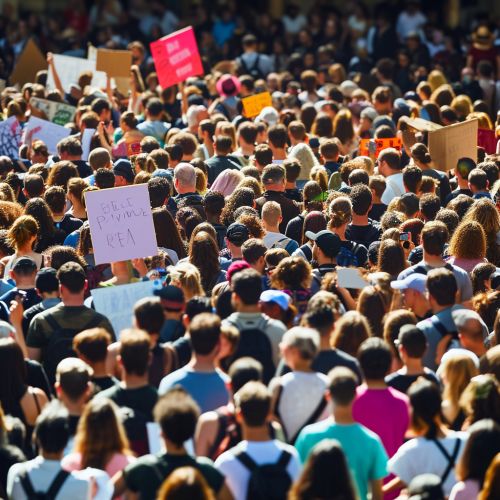Direct Action
Introduction
Direct action refers to the strategic use of immediately effective acts, such as strikes, demonstrations, or sabotage, to achieve a political or social end. It is a form of political activism that bypasses established political processes to accomplish objectives directly, often in a confrontational manner. Direct action can take many forms, from nonviolent protests and civil disobedience to cyber-attacks and property destruction. It is often used by groups that feel marginalized from mainstream political systems and can be a powerful tool for social and political change.
History
The concept of direct action has its roots in various social and political movements throughout history. Some of the earliest examples can be traced back to the labor movements of the 19th century, where workers would organize strikes and protests to demand better working conditions and fair wages. These actions were often met with violent repression, but they also led to significant improvements in workers' rights and labor laws.
In the 20th century, direct action became a key strategy in the civil rights movement in the United States. Activists like Martin Luther King Jr. and Rosa Parks used nonviolent direct action tactics, such as sit-ins, boycotts, and marches, to challenge racial segregation and discrimination. These actions played a crucial role in the passage of landmark legislation like the Civil Rights Act of 1964 and the Voting Rights Act of 1965.
More recently, direct action has been used by environmental activists, anti-globalization movements, and digital rights advocates, among others. For example, the hacktivist group Anonymous has used cyber-attacks to protest against government censorship and corporate misconduct. Similarly, the Occupy Wall Street movement used direct action tactics like occupations and sit-ins to protest against economic inequality and corporate influence in politics.


Types of Direct Action
Direct action can take many forms, depending on the goals of the activists and the context in which they are operating. Some common types of direct action include:
Strikes
A strike is a work stoppage caused by the mass refusal of employees to work. It is often used by labor unions to pressure employers into meeting their demands for better wages, safer working conditions, or other benefits. Strikes can be extremely effective, but they also carry significant risks for workers, including the possibility of job loss.
Protests and Demonstrations
Protests and demonstrations are public gatherings where people express their opposition to or support for a particular issue or policy. They can range from peaceful marches and rallies to more confrontational tactics like blockades and sit-ins.
Civil Disobedience
Civil disobedience involves deliberately breaking laws that are considered unjust or immoral. This can include actions like refusing to pay taxes, blocking traffic, or occupying government buildings. Civil disobedience is often used as a form of nonviolent protest, but it can also lead to legal consequences for the participants.
Sabotage and Property Destruction
In some cases, activists may resort to sabotage or property destruction to achieve their goals. This can include actions like defacing billboards, disabling machinery, or even committing arson or bombings. While these actions can be effective in disrupting the status quo, they are also highly controversial and can lead to severe legal and ethical consequences.
Cyber-Activism
With the rise of the internet, direct action has increasingly moved into the digital realm. Cyber-activism can include tactics like hacking, doxxing, and digital sit-ins, where activists overload a website's servers to make it temporarily inaccessible. While cyber-activism can be a powerful tool for change, it also raises complex legal and ethical issues.
Effectiveness and Criticisms
The effectiveness of direct action can vary widely depending on the context, the tactics used, and the goals of the activists. In some cases, direct action can lead to significant social and political change. For example, the civil rights movement in the United States achieved major legislative victories through the use of direct action tactics.
However, direct action can also be controversial and can sometimes lead to backlash. Critics argue that it can be disruptive, illegal, and even violent. They also argue that it can alienate potential allies and undermine the legitimacy of the activists' cause.
Despite these criticisms, many activists argue that direct action is necessary to challenge entrenched power structures and bring about meaningful change. They argue that traditional political processes often exclude marginalized groups and fail to address systemic injustices.
